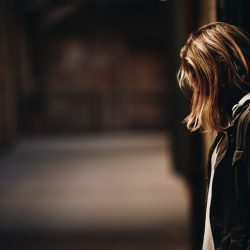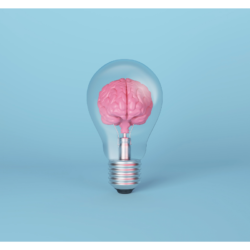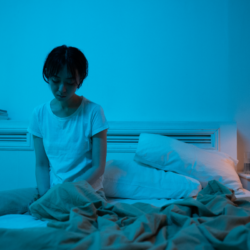Saffron is an atypical crocus in many respects and whose reputation is well established. Unlike other crocuses , it is the only one whose flowering is autumnal . The preciousness that characterizes it makes it particularly expensive, and this since the highest antiquity, and also remarkable; as I will now practice demonstrating.
A little history
4000 years, it is approximately the age of the oldest written traces which relate to saffron, in particular in Egypt, in papyri dating from the 19th and 18th centuries BC. The Ebers papyrus , less ancient, relates meanwhile the cultivation of saffron in the gardens of Louksor, and it is in the later history of Egypt (Ptolemaic period) that saffron is invited to demonstrate an unprecedented luxury in terms of perfumes, where it rubs shoulders with incense, myrrh, cinnamon, cinnamon, iris and so many others, some of which are destined to make up kyphi.
In Greece, reported by Hippocrates and Theophrastus, the krokos designates the plant just as much; from a botanical point of view, than the precious product that it elaborates through its stigmata. Very employed then in medicine, he was able to find many other jobs through which it was especially important to expose wealth and power. For example, Nero and many other Roman emperors strewn the ground with saffron before stepping on it.
During banquets, we learn from Lucien , saffron was mixed with wine, which Plutarch explains in this sense: gives off a delicate and pleasant aroma, which slowly soothes the disorder and restlessness in the body of those who get drunk, so that all the effects of the wine subside and disappear as calm is restored “. After such table talk, the drinker had only to go to his bed, if he could, on which, during the nuptial period, saffron was sprinkled, recalling the Olympian bed of Zeus and Hera , sprinkled of saffron.
What are the main pharmacological properties of Saffron stigmas?
Neuropsychic properties:
-
Antidepressant action:
The effectiveness of saffron on mild to moderate depression has been the subject of several studies. These were summarized and analyzed in a 2013 meta-analysis, and in a 2014 literature review.
A first double-blind, placebo-controlled trial was conducted in 2005 on 35 subjects with depression according to the DSM-IV psychiatric classification, of moderate to severe intensity. After 6 weeks of treatment, subjects who took 30 mg per day of ethanolic saffron extract had a significantly reduced Hamilton score compared to the placebo group with no more adverse effects and showed a marked improvement in the intensity of symptoms. depressive, going from moderate-severe to mild.
In two other clinical studies in 2004 and 2005, also conducted double-blind, with an identical patient selection and protocol, the efficacy of this same extract was compared to reference treatments, fluoxetine, a selective inhibitor of the reuptake of serotonin (20mg per day), and imipramine, a norepinephrine and serotonin reuptake inhibitor (100mg per day). The results showed that the improvements in the Hamilton score were equivalent in the subjects who received the saffron stigma extract or the drug treatments, thus reflecting the same therapeutic efficacy.
The comparative study with fluoxetine was replicated in another randomized double-blind pilot trial conducted with saffron petal extracts and showed identical results.
-
Improvement of cognitive disorders, especially in the elderly and in Alzheimer’s disease:
In humans, the effect of saffron on cognitive decline was studied in 2010 by Iranian researchers in subjects aged 55 and over, suffering from a moderate form of Alzheimer’s disease , by ADAS- cog (= Alzheimer’s Disease Assessment Scale-cognitive-subscale) and CDR (= Clinical Dementia Rating), psychometric tests that assess cognitive functions such as memory, orientation, language and praxis and quantify the degree of dementia.
In 2014, a randomized, double-blind clinical trial comparing saffron extract with memantine, another anti-Alzheimer ‘s drug , conducted in 68 patients for 12 months, showed a reduction in cognitive decline , comparable between the two products, with a favorable safety profile for saffron.
-
Other neuroprotective and neuropsychic properties:
An Iranian randomized clinical trial, conducted in humans in 2019, confirmed the short- and long-term neuroprotective effects of aqueous saffron extract at a dose of 200mg per day on ischemic strokes.
-
Antinociceptive properties:
In a randomized, double-blind clinical trial in 2018, saffron and duloxetine (a gold standard antidepressant) demonstrated comparable efficacy in treating symptoms of fibromyalgia , including symptoms of depression and level of anxiety. pain felt.
Improvement of age-related vision problems:
In humans, in a crossover clinical study, conducted double-blind against placebo in 2010, 25 subjects with early age-related macular degeneration ( AMD ) received a saffron extract or a placebo for 3 months. Retinal function was assessed by focal electroretinogram. This test assesses the function of the central retina by the amplitude and the threshold of the response to the light signal. The results showed that taking 20 mg per day of saffron significantly improves the amplitude of the response to light stimulation while decreasing the signal perception threshold.
A 2019 literature review confirms the therapeutic potential of saffron in eye diseases; for example: age-related macular degeneration, glaucoma and diabetic maculopathy.
Improvement of sexual dysfunction, especially in patients on antidepressants:
In 2009, an open study highlighted the positive effect of saffron in improving sexual functions in 20 men with erectile dysfunction who had no prior treatment, after 10 days of taking 200 mg per day of an aqueous extract of the plant, composed of safranal and crocin. However, an open-label, randomized, fixed-dose, crossover study comparing the efficacy and safety of sildenafil citrate and saffron (at a dose of 30 mg twice a day) carried out in 2010 on 346 men, did not not confirmed this action on erectile function.
In another double-blind clinical study in 30 men with depression treated and stabilized with fluoxetine, and presenting with disorders of sexual function induced by the molecule; the effect on sexual function of an ethanolic extract of saffron standardized in crocin was compared with that of a placebo. At the end of the 4 weeks of intake, the group that received 30 mg of saffron extract per day had a significant improvement in erectile function and the level of satisfaction with sexual intercourse. A similar study conducted in 38 women treated with fluoxetine also showed a reduction in sexual disorders linked to this molecule after treatment for 4 weeks with 30 mg per day of saffron.
Cardioprotective properties:
Several studies conducted in vivo have shown that aqueous extracts of saffron or safranal alone exert a cardioprotective effect against ischemia/reperfusion or isoproterenol; a molecule toxic to myocardial cells. This property can be explained by anti-apoptotic, lipid antioxidant and antioxidant actions .
In 2019, a systematic meta-analysis of published studies regarding the effect of saffron on cardiovascular risk factors was conducted. It evaluated the clinical effects of plant extracts and/or its constituents in 622 participants. This results in the significant reduction of diastolic blood pressure, body weight, waist circumference and blood sugar; which suggests that their administration could be beneficial in cardiovascular diseases.
Metabolic properties:
In humans, a clinical study conducted double-blind against placebo in 61 subjects showed that taking an aqueous extract of saffron or crocin significantly reduces the risk of metabolic syndrome linked to taking olanzapine; an antipsychotic drug. In fact, saffron becomes the potential therapeutic candidate to alleviate the complications of the metabolic syndrome; including hypertension, hyperglycemia, obesity and dyslipidemia.
Other properties:
- Antioxidants
- Anti-inflammatories
- Anticancer
- Digestive
- Action on premenstrual syndrome
Are there any precautions for use concerning Saffron?
Toxicity:
- Massive doses of saffron would be toxic (1.5 g and more). The lethal dose is 20 g.
- High dose narcotic.
Contraindications:
- Avoid in pregnant women; because of the abortifacient risk, as well as in breastfeeding women (risk of toxicity in infants).
- Due to a risk of hypotension, it is not recommended to combine saffron with an antihypertensive, except on medical advice and clinical supervision.
- Avoid in children and adolescents under 18 years.
Precautions for use:
- Risk of inhibition of platelet aggregation.
How to take Saffron and at what dosage?
Dry form:
- As a food supplement, in capsules of standardized extract of saffron stigmas , at the rate of 1 capsule per day during the meal.
Medical bibliographic sources and clinical trials :
-
Kashani L. et al., Saffron for treatment of fluoxetine-induced sexual dysfunction in women : randomised double-blind placebo-controlled study, Hum Psychopharmacol., 2013
-
Safarinajad M.R. et al., An open label randomized, fixed-dose ; crossover study comparing efficacy and safety of sildenafil citrate and saffron ; (Crocus sativus Linn.) for treating erectile dysfunction in men naïve to car treatment. Int J Impot Res., 2010
-
Akhondzadeh S. et al., Crocus sativus L. in treatment of mild to moderate depression ; a double-blind, randomized and placebocontrolled trial, Phytother Res., 2005
-
Lopresti A.L. et al., Saffron (Crocus sativus) for depression ; a systematic review car of clinical studies and examination of underlying antidepressant mechanism of action, Hum Psychopharmacol., 2014
-
Hausenblas H.A. et al., Saffron (Crocus sativus L.) and major depressive disorder ; a mata-analysis of randomized clinical trials, J Integr Med., 2013
-
Akhondzadeh S. et al., Comparison of Crocus sativus L. and imipramine in the treatment of mild to moderate depression ; a pilot double-blind randomized trial, BMC Complement Car Altern Med., 2004
-
Noorbala A.A. et al., Hydroalcoholic extract of Crocus sativus L. versus fluoxetine in the treatment of mild to moderate depression ; a double-blind, randomized piot trial, J Ethnopharmacol., 2005
-
Falsini B. et al., Influence of saffron supplementation on retinal flicker sensitivy in early age-related car macular degeneration; Invest Ophtalmol Vis Sci., 2010
-
Shamsa A. et al., Evaluation of Crocus sativus L. (saffron) on male erectile dysfunction : a pilot study, Phytomedicine, 2009
-
Modabbernia A. et al., Effect of saffron car on fluoxetine-induced sexual impairment in men ; randomized double-blind placebo-controlled trial, Psychopharmacology (Berl), 2012
-
Fadai F. et al., Saffron aqueous extract prevents metabolic syndrome in patients with schizophrenia on olanzapine treatment ; a randomized triple blind placebo controlled study, Pharmacopsychiatry, 2014
-
Arkhondzadeh Basti A. et al., Comparison of petal of Crocus sativus L. and fluoxetine in the treatment of depressed outpatients ; a pilot double-blind randomized car trial, Prog Neuropsychopharmacol Biol Psychiatry, 2007





